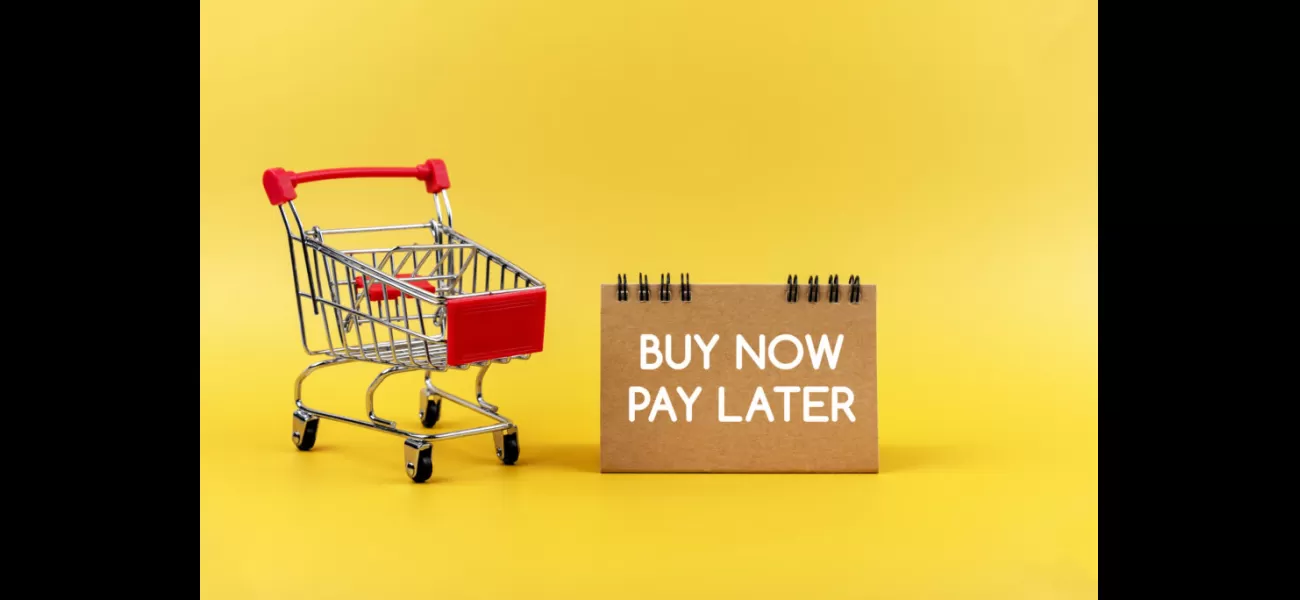Americans could face hidden debt from payment plans that allow them to buy now and pay later.
Wells Fargo economists found BNPL loans skyrocketed to $24.4B in 2021, up 1,000% from 2019 and making up 2.5% of US credit card market.
January 13th 2024.

In recent years, the phrase "buy now, pay later" has become a buzzword in the world of consumer spending. With the option to pay for purchases in installments, this payment plan has gained significant traction and has become a driving force behind consumer spending in the latter half of 2023. However, as its popularity continues to grow, concerns are being raised about the potential economic repercussions that come with these loans, often referred to as "phantom debt."
According to Wells Fargo's economists, the use of buy now, pay later plans has skyrocketed, reaching a staggering $24.4 billion in 2021. This is a massive increase of 1,000% from 2019 and now accounts for about 2.5% of the US credit card market, as reported by Business Insider. But as these quasi-loans become more prevalent, experts are raising red flags due to the lack of comprehensive reporting to credit agencies.
The Federal Reserve Bank of Philadelphia highlighted this issue, stating that buy now, pay later loans are not currently reported to any major credit reporting agencies. This lack of reporting makes it challenging to accurately assess the impact of these installment plans on consumer debt. On top of that, the firms offering these plans are hesitant to share their data, as it is considered proprietary information in a competitive market.
As the bills for these plans start to come due, concerns are growing, especially after a surge in buy now, pay later use during the 2023 holiday season. According to Adobe, there was a 47% increase in the use of these plans on Black Friday and a 43% rise on Cyber Monday. While these plans offer an alternative to traditional credit cards, allowing consumers to pay off debts without accruing interest, late payments can result in substantial fees and high-interest rates, sometimes reaching as high as 30%.
A survey by PYMNTS revealed that even high-income earners, making at least $100,000 annually, have a high usage rate of installment plans, at 64% in the previous 12 months. This rate surpasses the overall average of 60%, indicating that even those with higher incomes are turning to these plans for their purchases. However, this behavior can lead to a cycle of debt as some consumers may eventually resort to using credit cards to pay off their buy now, pay later debts. This can result in high-interest rates, reaching over 20%, as seen in a study by the Social Science Research Network.
Wells Fargo economists Tim Quinlan and Shannon Seery Grein have emphasized the potential impact of buy now, pay later on consumer debt. Without a central repository for monitoring these plans, it becomes challenging to accurately measure their prevalence. Mark Luschini, chief investment strategist at Janney Montgomery Scott, has also raised concerns about the increased use of these installment plans, suggesting that it may indicate a strain on consumers, especially those already struggling with credit card debt and auto loans.
While the full extent of the issue remains uncertain, experts are warning about the potential long-term effects on consumer spending and the broader economy. As billionaire investor Warren Buffett famously said, "If you don't have leverage, you don't get in trouble." The surge in popularity of buy now, pay later plans demands a closer look at their implications on consumer debt and overall economic stability.
According to Wells Fargo's economists, the use of buy now, pay later plans has skyrocketed, reaching a staggering $24.4 billion in 2021. This is a massive increase of 1,000% from 2019 and now accounts for about 2.5% of the US credit card market, as reported by Business Insider. But as these quasi-loans become more prevalent, experts are raising red flags due to the lack of comprehensive reporting to credit agencies.
The Federal Reserve Bank of Philadelphia highlighted this issue, stating that buy now, pay later loans are not currently reported to any major credit reporting agencies. This lack of reporting makes it challenging to accurately assess the impact of these installment plans on consumer debt. On top of that, the firms offering these plans are hesitant to share their data, as it is considered proprietary information in a competitive market.
As the bills for these plans start to come due, concerns are growing, especially after a surge in buy now, pay later use during the 2023 holiday season. According to Adobe, there was a 47% increase in the use of these plans on Black Friday and a 43% rise on Cyber Monday. While these plans offer an alternative to traditional credit cards, allowing consumers to pay off debts without accruing interest, late payments can result in substantial fees and high-interest rates, sometimes reaching as high as 30%.
A survey by PYMNTS revealed that even high-income earners, making at least $100,000 annually, have a high usage rate of installment plans, at 64% in the previous 12 months. This rate surpasses the overall average of 60%, indicating that even those with higher incomes are turning to these plans for their purchases. However, this behavior can lead to a cycle of debt as some consumers may eventually resort to using credit cards to pay off their buy now, pay later debts. This can result in high-interest rates, reaching over 20%, as seen in a study by the Social Science Research Network.
Wells Fargo economists Tim Quinlan and Shannon Seery Grein have emphasized the potential impact of buy now, pay later on consumer debt. Without a central repository for monitoring these plans, it becomes challenging to accurately measure their prevalence. Mark Luschini, chief investment strategist at Janney Montgomery Scott, has also raised concerns about the increased use of these installment plans, suggesting that it may indicate a strain on consumers, especially those already struggling with credit card debt and auto loans.
While the full extent of the issue remains uncertain, experts are warning about the potential long-term effects on consumer spending and the broader economy. As billionaire investor Warren Buffett famously said, "If you don't have leverage, you don't get in trouble." The surge in popularity of buy now, pay later plans demands a closer look at their implications on consumer debt and overall economic stability.
[This article has been trending online recently and has been generated with AI. Your feed is customized.]
[Generative AI is experimental.]
0
0
Submit Comment





